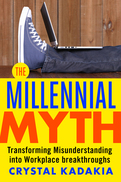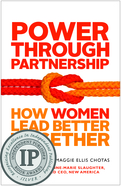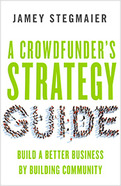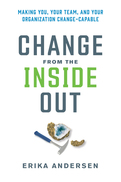2012
People everywhere feel overwhelmed today—weighed down by countless responsibilities and buffeted by never-ending changes in their personal and professional lives. Repacking Your Bags shows readers how to climb out from under these burdens and find the fulfillment that is missing in their lives.
“Living in the place you belong, with the people you love, doing the right work, on purpose.” This is how Richard Leider and David Shapiro define the good life. Technological advancements, economic shifts, and longer lifespans mean most of us will need to repeatedly reimagine our lives. In this wise and practical guide, Leider and Shapiro help you weigh all that you're carrying, leverage what helps you live well, and let go of those burdens that merely weigh you down.
This third edition has been revised with new stories and practices to help you repack your four critical “bags” (place, relationship, work, and purpose); identify your gifts, passions, and values; and plan your journey, no matter where you are in life.
-
New edition of the classic bestsellerover 500,000 copies sold and translated into seventeen languages
-
An indispensable tool in the lifelong journey of living a purposeful life
-
Thoroughly revised and updated with new stories, exercises, and tools
The first and second editions of this classic book showed readers how to develop their own unique vision of the good lifewhich Leider and Shapiro define as "living in the place you belong, with the people you love, doing the right work, on purpose"and take practical steps to achieve it. Inspired by a spirit of travel and adventure, it uses packing and repacking your bags as a metaphor for deciding what you really need in your journey through life.
So why a third edition? Because the world has changed. When they wrote the first two editions, Leider and Shapiro assumed that repacking was something people might do once or twice in their lives. But technological advances, major economic shifts, longer life spans, and changing social roles are revolutionizing the way we live and work. Today we have to repeatedly unpack and repack as the inevitable shifts and surprises life has to offer continually unfold before us. With each step along the way, we must reexamine what has brought us here and continue asking ourselves if the choices that have sustained us so far are continuing to do soor if they're just weighing us down.
This new edition has been thoroughly revised and reimagined with this lifelong focus in mind. It contains new stories and practices for repacking your four critical "bags"place, relationship, work, and purposeas well as a new Repacking Journal for planning your "trip" and Leider's immensely popular Calling Card exercise for identifying your gifts, passions, and values. Repacking Your Bags reminds all of us to regularly ask why we carry what we do and try to lighten our loadsbecause the good life is worth striving for at every age.
What sets this book apart from similar titles
- Another book in this genre is The Happiness Project, but it focuses on the author's personal journey, making it a good fit mostly for readers who share the author's personality. Repacking Your Bags is a happiness book that applies to a wide range of people and personalities.
- Books like the Power of Less suggest you approach happiness through simplification and efficiency, whereas Richard Leider points to deeper themes such as finding one's true purpose or calling.
- And the book Stumbling on Happiness devotes many pages to the psychology and neuroscience of unhappiness, which leads to some interesting insights but is less focused on practical, easy-to-implement advice.
2017
Millennials have been condemned as lazy, entitled, disloyal, and disrespectful and needing constant hand-holding. But Crystal Kadakia—a Millennial herself as well as an organizational development consultant and two-time TEDx speaker—shows that not only are these negative stereotypes dead wrong, but each one conceals a positive workplace practice that forward-looking companies must adopt if they are to endure. She illuminates how the advent of digital technology is the crucial root cause of many Millennial behaviors and offers a guide for what our traditional workplace needs to do to attract, engage, and retain modern talent.
Millions have found mindfulness to be a powerful practice for reducing stress, enhancing attention, and instilling tranquility. But it can offer so much more—it can transform you, make you more fully awake, alive, and aware of your connection to all beings. In Japanese, the character that best expresses mindfulness, 念, consists of two parts—the top part, 今, meaning “now,” and the bottom part, 心, meaning “heart.” Using stories from his own life as the son of an Irish father and a Japanese mother, a professor in Japan and America, a psychotherapist, a father, and a husband, Stephen Murphy-Shigematsu describes eight “heartfulness” principles that help us realize that the deepest expression of an enlightened mind is found in our relation to others.
Heroic male partnerships are a staple business success story, but female partnerships rarely get the same kind of attention. Power Through Partnership is a call for women to recognize and build on the inherent strengths that make them uniquely able to create successful, trust-based professional relationships. Polk and Chotas demolish the myths that keep women from collaborating and then offer readers advice for handling potential challenges like finding the best partner, dealing with conflict, facing fears, taking risks, and knowing when to let go of a partnership.
Featuring lessons learned from women partners in all kinds of industries, this book shows that when women collaborate " combining complementary skills, pushing ego aside and supporting each other " they can work as full equals to achieve something that's exponentially greater than the two alone.
Jamey Stegmaier knows crowdfunding. He's a veteran of seven successful Kickstarter campaigns (and counting) that have raised over $3.2 million, and he's the proprietor of the widely read Kickstarter Lessons blog. In this book he offers a comprehensive guide to crowdfunding, demonstrating that it can be a powerful way for entrepreneurs to grow their businesses by building community and putting their customers first.
This book includes over forty stories of inspiring successes and sobering disasters. Stegmaier uses these examples to demonstrate how to (and how not to) prepare for a campaign, grow a fan base, structure a pitch, find new backers, and execute many other crucially important “nuts and bolts” elements of a successful crowdfunding project.
But Stegmaier emphasizes that the benefits of crowdfunding are much more about the “crowd” than the “funding.” He shows that if you treat your backers as people, not pocketbooks—communicate regularly and transparently with them, ask their opinions, attend to their needs—they'll become advocates as well as funders, exponentially increasing your project's chances of succeeding.
Erika Andersen says avoiding change has been a historical imperative. In this book, she shows how we can overcome that reluctance and get good at making necessary change. Using a fictional story about a jewelry business changing generational hands, Andersen lays out a five-step model for addressing both this human side of change and its practical aspects:
Step 1: Clarify the change and why it's needed—Get clear on what the change is and the benefits it will bring.
Step 2: Envision the future state—Build a shared picture of the post-change future.
Step 3: Build the change—Bring together a change team, engage key stakeholders, and plan the change.
Step 4: Lead the transition—Build a transition plan that supports the human side of the change, then engage the whole organization in making the change.
Step 5: Keep the change going—Work to make your organization permanently more change-capable.
With opportunities to self-reflect and try out the ideas and approaches throughout, this book is a practical guide to thriving in this era of nonstop change.






















